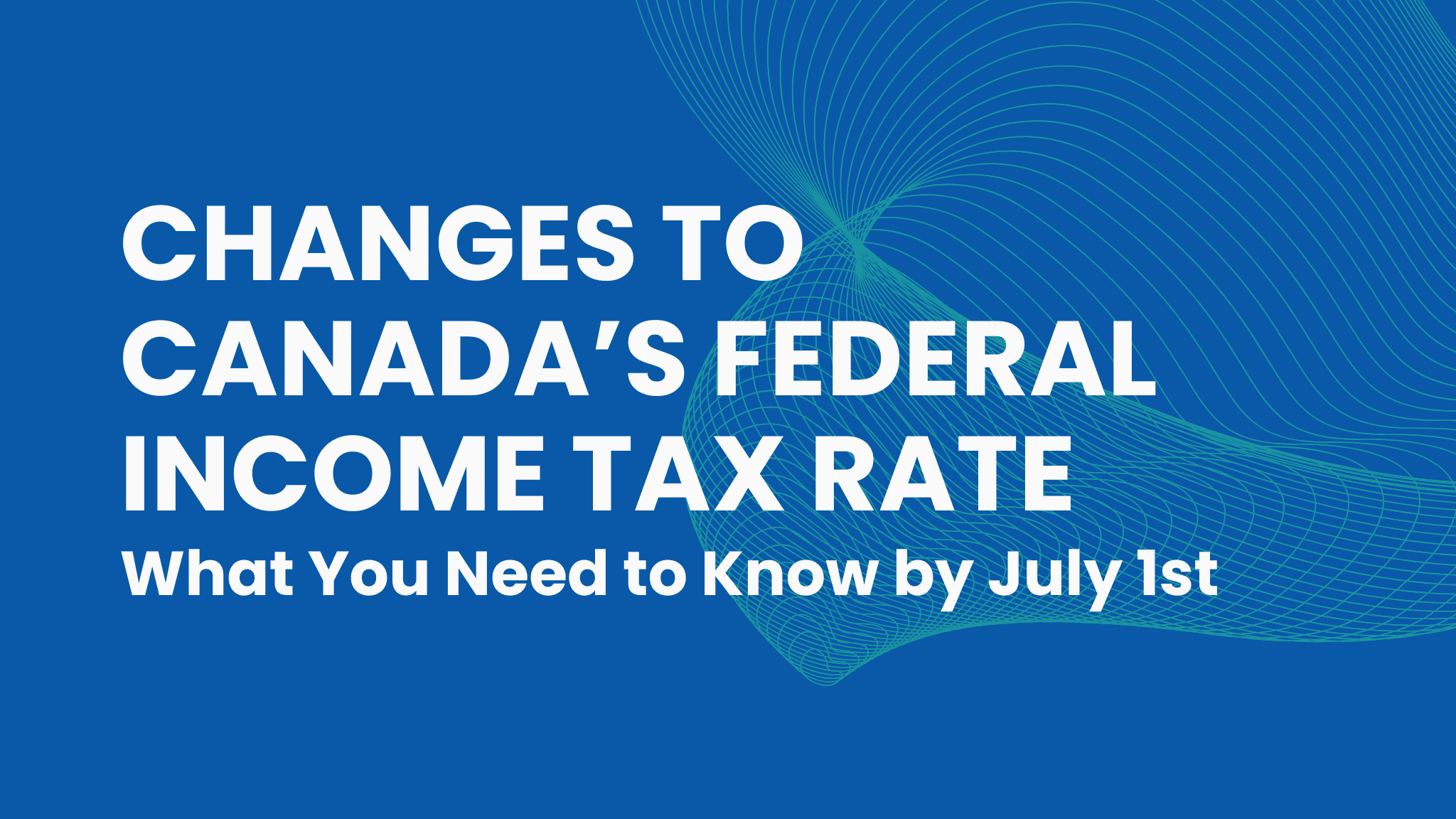
Changes to Canada’s Federal Income Tax Rate: What Employers Need to Know by July 1
A federal tax change is about to kick in, and it could mean more money in your pocket. Starting July 1, 2025, the Government of Canada is lowering one of its core income tax rates. It’s not a huge shift, but it’s one that every Canadian earner should be aware of, especially if you handle payroll.
Whether you are a business owner, bookkeeper, HR lead, or just someone trying to understand what is happening to your pay stub, here is what you need to know.
Details on the July 1 CRA Tax Rate Change
Canada’s income tax system works in brackets. The first portion of your income each year is taxed at the lowest federal rate. For 2025, that first portion is income up to $55,867.
That lowest rate has been 15 percent for a long time. But starting July 1, 2025, it will be reduced to 14 percent.
This means that starting with July pay periods, a smaller portion of your pay will go to taxes, at least on that first portion of your income. For most Canadians, it will mean slightly higher take-home pay on every cheque.
How the CRA Is Handling It
Since the change takes effect halfway through the calendar year, the Canada Revenue Agency is smoothing it out by applying a blended annual rate of 14.5 percent for 2025. In simple terms:
From January to June, payroll uses the old 15 percent rate
From July to December, the new 14 percent rate applies When you file your 2025 taxes next year, the CRA will average everything out using 14.5 percent for the full year
This way, employees are not overpaying or underpaying. The math just works out a little differently behind the scenes.
What You Need to Know if You Do Payroll
If you handle payroll, it’s your responsibility to make sure the right amount of federal tax is being withheld, starting with pay periods dated July 1 or later. OneTwoPay will automatically integrate the new tax rates. Therefore, if you use our system, it’s taken care of for you.
To support this transition, the CRA has released updated tools and deduction formulas, including:
The T4127 July Edition, which includes updated tax brackets and calculation formulas
A revised version of the Payroll Deductions Online Calculator
New downloadable federal and provincial deduction tables
In addition to the federal changes, some provinces are also changing their rates, including Alberta, Manitoba, Nova Scotia, and P.E.I. It’s a good idea to double-check your province’s table just in case.
If You Use OneTwoPay
If you use OneTwoPay to generate pay stubs, the good news is that we have already accounted for the updated federal tax rate in our automatic deduction calculations. Starting with pay stubs dated July 1 or later, the 14 percent federal rate will be applied automatically when you use OneTwoPay’s “Calculate CRA Deductions” option.
If you choose to override our calculations or manually enter your own deductions, be aware of this tax rate change and ensure your numbers reflect the correct updated formulas. Otherwise, you may end up withholding too much tax, which can cause issues at year-end.
No changes are needed on your end if you are using our standard CRA calculation settings.
The Bottom Line
This tax change is not massive, but it matters. A one percent drop in the lowest federal tax rate means millions of Canadians will see an increase in their net pay. It also means payroll processors and businesses need to update their systems to stay compliant.
With the CRA’s tools now live and platforms like OneTwoPay already updated, all you need to do is keep an eye on your deductions and ensure July payroll is handled with the new rates in mind.
If you are an employee, enjoy the extra dollars in your paycheque. If you are managing payroll, now is the time to double-check your deductions and keep everything running smoothly.
If you have questions along the way, we're here for you.



